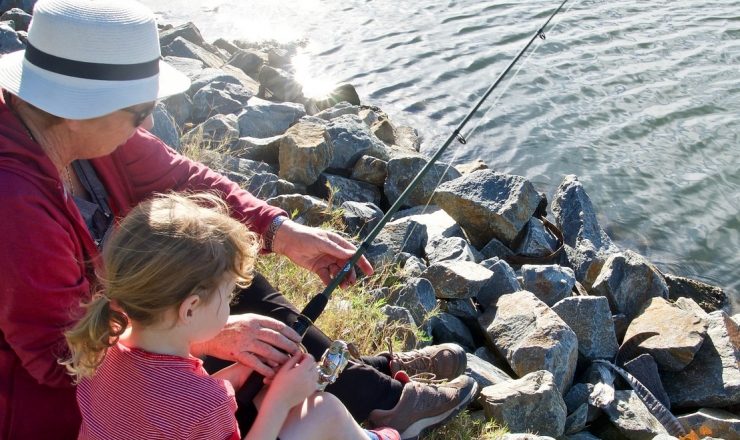As my oldest child ends her sophomore year of college, I can finally come up for air and assess the damages (as well as the wins) of my pre-college/college parenting thus far. Though my husband and I both went to college, sending our firstborn to school was quite a learning experience.
No matter how many people I talked to or how many books I read, it felt much like jumping into the deep end. And being as objective as I can be, I would give us a solid B- on how we handled things.
Based on my experience, I broke our report card into three core subjects which include medical, financial, and automotive. Though there are many crucial areas to parenting a child through the last few years of high school and into college, I felt these were specific places where I learned a lot, made some mistakes, and had a few small victories.
Parent report cards into three subjects: Medical, Financial, and Automotive
Medical
Sometimes when my oldest was in early high school, I began to engage less in discussions during doctor visits. The primary care doctor and dermatologist started speaking directly to my child as she got older, so this seemed natural.
If questions were directed to me, I tried my best not to respond but to wait for my child to answer. I discussed possible questions or concerns with my child before and after visits and encouraged her to advocate for herself and always be honest with her doctor. And when my daughter was a senior in high school, I began to wait in the lobby during her good visits and vaccinations. I helped her complete her online forms and scheduling and frequently encouraged her to call the doctor or nurse when she had a clinical question or concern.
Though blessed with healthy children, I tried to take every opportunity to inform my child about over-the-counter medications, including how to read a label, when to speak to a pharmacist, and when to call the nurse line. Along these lines, we talked often and early about birth control. I also encouraged my daughters to share birth control questions or concerns with their doctors.
When my child chose a college, we researched the medical resources on her campus. In her case, I learned that the system is mainly overused and under-supported. So, we found an extensive, local medical network that accepts our insurance and has many specialties. My daughter created her online patient portal, allowed us access to billing, and made insurance updates as needed.
I recently shared the free Web MD online symptom checker with my child, who told me about MedlinePlus. MedlinePlus is the most extensive medical library and part of the NIH. They provide free access to wellness information. I wish I had known about that one sooner! Parent Grade on Medical: A
Finances
Like many parents, we began to introduce basic money concepts to our children when they were in elementary school. When my daughters were in late middle school, they had debit cards and savings accounts funded by birthday money and odd jobs. Our bank, like most, offers a youth account that is free to open and does not require a minimum balance.
For our first child, we insisted she put 20% into savings. We lowered this to 10% for our second child and later learned that 15% is the sweet spot. We maintained this standard as our children got part-time jobs.
When my children reached high school, we began to require them to pay for more of their expenses as they had part-time jobs. This was a challenging situation and very different for each child. I learned that the amount of time a teen can devote to a job varies wildly depending on academic and extracurricular activities.
In hindsight, we should have given our teens some specific bills to cover aside from gas and food. Paying bills such as car insurance, car payment, or cell phone creates an invaluable budgeting experience. By having our children pay for gas and “extras,” they could go without to cover an expense, which is not possible when an actual bill is due.
The summer before my daughter’s freshman year of college, we had very honest conversations about college and its associated costs. In my private psychotherapy practice, I am always surprised at the number of young clients headed to college without understanding how their parents will fund this or what this expense looks like.
We shared how we would budget for a four-year education and how we saved for this expense. Many college students will attend school on student loans. While this is an excellent way to fund a degree, college students must budget this money per semester.
In helping our teen create a budget for college, we asked her to consider the following
- What expenses does your semester tuition cover?
- What additional expenses will your loans or parents pay for, such as parking, books, lab fees, tutoring fees, clubs, and membership fees?
- What expenses are not covered/ what will you be paying for?
- What is your allowance or needed income per month to cover these expenses?
We asked her to identify these “other” expenses, such as clothing, eating out, or concerts/ social events. And we asked her to find an app she would use to track these expenses. We agreed to convene monthly and look at the allowance and expenses for my daughter’s freshman year. In her sophomore year, we reduced this allowance and encouraged her to get a job.
While these ideas were great in “theory,” my daughter does not use an app or budget tool and frequently gets to the end of the month with a zero balance. I wish we had instituted budgeting sooner, as we could have influenced the use of the app when she was in high school.
Parent Grade on Finances: C+
Automotive
Shortly after our daughters got their licenses, we replaced essential car duties. The first oil change presented an excellent opportunity to help our daughter understand what is involved in basic car maintenance. And when the renewal came for my teen’s car registration, I walked her through this process and helped her understand how to do this in the future.
Shortly after moving to college, we helped our teen find a well-ranked service department for oil changes, essential maintenance, and tires. We also supplied her car with a safety kit and battery jumper.
Though I felt we did our best to involve our children in the car’s care and maintenance, we failed to share some key concepts, including the following.
Never drive on a flat tire unless it is a safety issue.
Tell your parents and consult your car’s manual whenever a warning light comes on.
Your car’s manual is in your glove compartment.
By neglecting these items, we later had the opportunity to replace a wheel rim as my child drove at a substantial speed and distance on a flat tire. By not stressing the importance of responding to a warning light, we later replaced several wires that a squirrel had eaten while building a winter nest in my daughter’s car.
Parent Grade on Automotive: C-
Though I still feel I am making mistakes daily and learning how to parent a college student, I think I am “passing” most days. No matter how much information I read or how many experts I talk to, I must remember that neither of my children came with an owner’s manual. And, if they did, I may not have realized where it was located until several warning lights were flashing. Which, though expensive, is a mistake I can learn from and course correct before my second child leaves for college.







